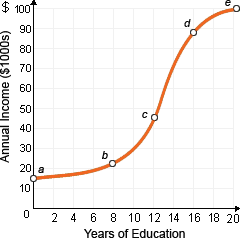As per demonstrated in this graph, there average college graduate will earn around: (1) $12,000 yearly. (2) $20,000 yearly. (3) $45,000 yearly. (4) $90,000 yearly. (5) $100,000 yearly.

Please choose the right answer from above...I want your suggestion for the same.